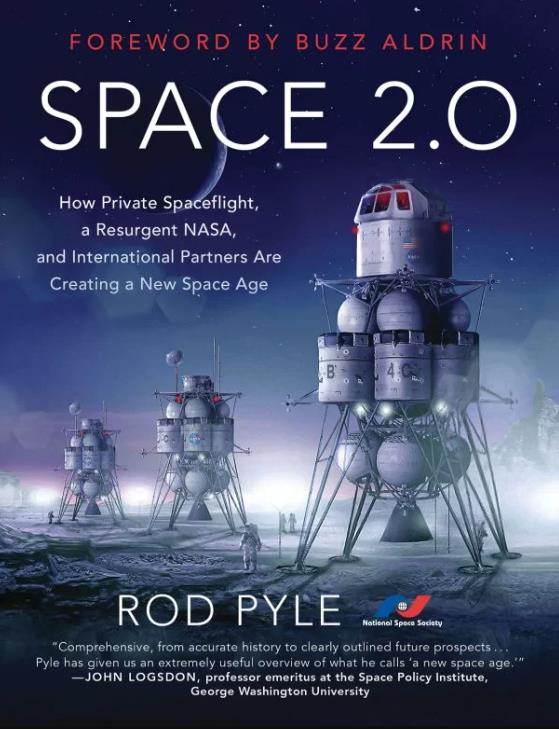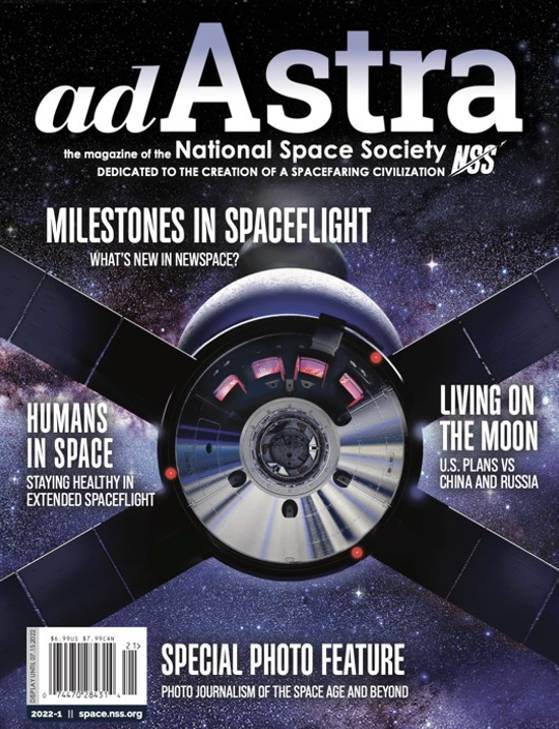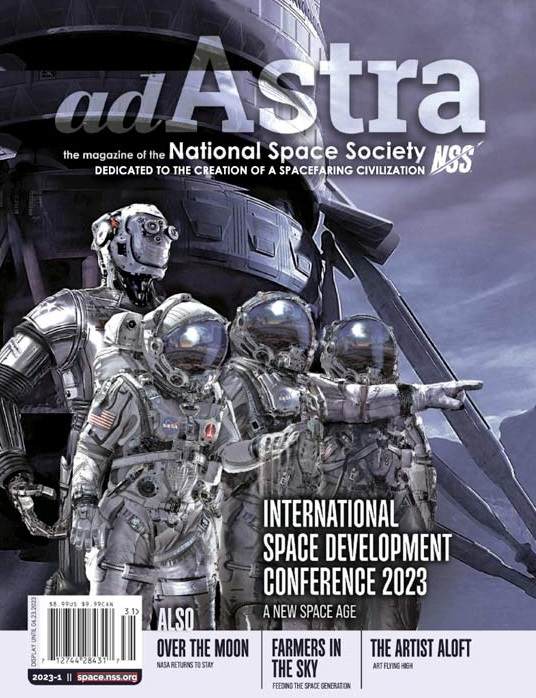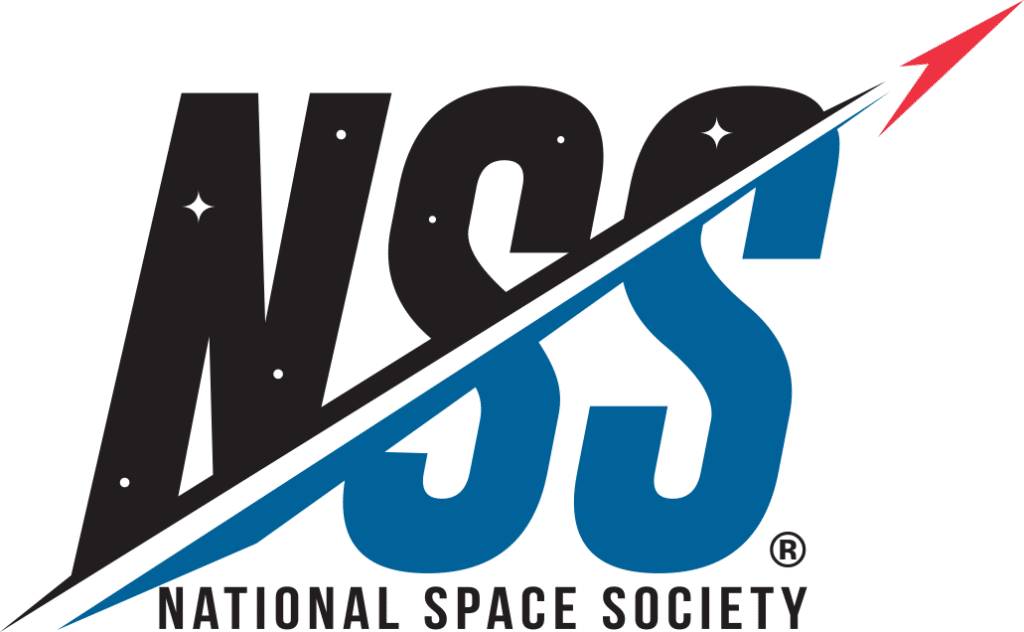By Brad Blair (Winter 2015)
A recently released study by the International Academy of Astronautics (IAA) found that space mineral resources (SMR) can serve as an economic gamechanger, opening a vast new source of wealth to benefit humanity. The study examined technical, economic, legal, and policy-related requirements to enable SMR, and offered specific recommendations to international space agencies and commercial enterprise for moving humanity forward into a new era of space settlement and commercial resource development. The study was assembled by two prominent space lawyers. Art Dula is a professor of law at the Houston Law School, trustee of the Heinlein Prize Trust, and founder of Excalibur Exploration Limited. Zhang Zhenjun is secretary general of the China Institute of Space Law, a resident director of the Chinese Society of Astronautics, and holds an MBA from George Washington University. The work solicited and included extensive input by entrepreneurial startup companies including Deep Space Industries, Shackleton Energy Company, Planetary Resources, Excalibur Exploration, Moon Express, and Tethers Unlimited.
Study findings on SMR technology and engineering design are that mining asteroids and lunar regolith is within reach of the current state of the technical art. The extrapolation of Earth-based mining appears to be a one-for-one trade with alterations due to vacuum, low gravity, and temperature, with bench and lab-scale testing to date in private and government labs on Earth affirming this conclusion. Indeed, the primary roadblocks to SMR today are more intimately related to reducing market, legal, and financial risk. A focus on customers, demographics, and increasing market certainty is needed to create a solid foundation for the future of space enterprise. The study found that the cost to develop Moon or asteroid water sources could become significantly lower than the delivery price from Earth, especially as distance increases, making space water a potential basis for future currency. Indeed, establishing spaceports and selling water mined in space is a key to unlocking a robust and sustainable space economy, enabling human expansion into the Solar System.
The study synthesizes a roadmap intended to maximize the speed and likelihood of economic SMR development, with the corollary benefit of protecting humanity from civilization-ending asteroid impacts. A critical element of the study is an entire chapter devoted to systems modeling and analysis, which presents a quantitative model of future space infrastructure and propellant demand. This work is based on a space population forecast stemming from Elon Musk’s stated goal to put 10,000 people on Mars within his lifetime. This goal was used to translate technical requirements for human space settlement into a deep space economic forecast based upon the ultimate consumer: the future space colonist. This per-capita approach offers a unique point of departure that can then be disaggregated into technical, financial, and policy goals, milestones and objectives. In principle, the agreement by both entrepreneurs and international space agencies on a baseline human space settlement model can serve to underwrite private business plans as well as facilitate the timing of key technology investments. Four company-level entrepreneurial roadmaps relating to space mineral resources were included in the study, laying out different approaches that each of these companies is taking.
The SMR study offers detailed analysis of SMR-related international treaties and policies around the world, recommending a proactive space law stance including property rights for harvested resources. The current body of international space law, Corpus Juris Spatialis (CJS), has established that national laws govern national activities in outer space within the current framework. Mining and ownership of space mineral resources is parallel to national laws and, as such, is consistent within current international law. History has repeatedly demonstrated that areas controlled primarily by national (as opposed to international) law prosper most readily. According to study co-lead Professor Zhang Zhenjun, “While concerns remain, and some scholars may say otherwise, the CJS is clear that the mineral bounty of space may be freely harvested for the benefit of private space actors, as well as all mankind. Any person without preoccupied prejudice could draw a solid conclusion to this effect if he or she simply imagines the benefits of increased supply of mineral resources to satisfy both terrestrial and extraterrestrial demand for all countries, especially at a time when traditional mineral resources on our planet are running out at unprecedented speed.”
Principle findings of the study are that SMR ventures cannot wait for government programs to lead in lowering the technological and programmatic risks. Commercial ventures will determine the optimum path for commercial success and aggressively lead the way beyond low Earth orbit. During the first half of the 21st century, space leadership must come from commercial enterprises and not depend upon government space programs. One concept that would leverage this series of initiatives is to convince government agencies that commercial enterprises will be there first and will be able to support government explorations by selling products to them at designated locations. These types of actions, in the past, have led to development of major new industries.
The study can be ordered from www.heinleinbooks.com.
This article was written by Brad Blair, geologist, mining engineer, and mineral economist currently serving as the representative for Region 4 on the NSS Board of Directors. The article originally appeared in Ad Astra, Winter 2015.






